Sustainability is crucial to us at the BMW Group, and we want to share with you the changes we have made, and those we plan to make, to ensure we continue driving towards a green future with the sole aim of being the most sustainable car manufacturer.
The increased production of all-electric and plug-in hybrid vehicles as part of the BMW i range are the main factors in maintaining our contribution to an ecological future and initiating our development of completely new driving concepts. As well as progressively ensuring that our vehicles are contributing to an environmentally friendly future, we also observe the sustainability of the production process from the value chain right up to the endpoint of reaching the customer.
Before an electric BMW vehicle arrives with the consumer it initially goes through a value chain, which covers all areas from the concept of the car and handling of its resources right up to the development phase. The whole chain is considered when assessing the environmental impact of our cars, so a fundamental aim for the BMW Group is to ensure that the value chain is sustainable and that it covers its own needs with recyclates and renewable raw materials, including energy supply. A further goal of ours is to reduce CO2 emissions by at least 40% from our vehicles.
Starting at the heart of our electric cars, we are now recycling all used BMW high-voltage batteries worldwide and using them in stationary storage systems to integrate renewable energy, increase stability and lower energy costs for our customers. The batteries we obtain are never wasted if they have surpassed their ‘second life’ and are instead recycled to produce new lithium-ion batteries that are favourable due to their high capacity and energy density, long lifetime, and low self-discharge rate.
To guarantee that the batteries we install in our electric vehicles are sustainable, BMW has a contractual agreement with cell manufacturers to use only green electricity when producing our fifth-generation high-voltage batteries. By using green electricity, a monumental estimate of around 10-million tonnes of CO2 is to be saved by the year 2030.
Keeping resource consumption as low as possible in the production process of our products to extend our company’s sustainability is a vow we made to ourselves back in 2001. We are able to observe and analyse the sustainability of this after introducing environmental management systems at all our existing production sites.
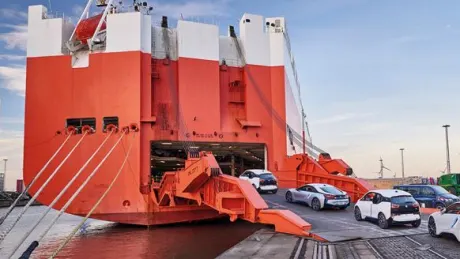

Material
As one of our most sustainable cars, The BMW i3 includes materials that are mainly comprised of renewable resources, boasting many environmentally friendly elements both inside and out.
Reducing the CO2 footprint is a significant circumstance we deem necessary to contribute towards, so we at the BMW Group are dedicated to being sustainable by reusing and recycling existing materials to reduce waste when manufacturing our cars. We believe it is crucial to reduce the use of primary materials, so instead, we use recycled materials that include around 25% secondary steel, up to 50% secondary aluminium in certain components, and up to 20% secondary thermoplastics. Because of this, we are proud to disclose that up to 95% of materials used to make a BMW i3 can be recycled, as well as 90% of its high-voltage battery, which can be extremely harmful to the environment if simply disposed of. With this in consideration, we are introducing a range of sustainable materials in both the interior and exterior when building our vehicles, whilst maintaining a premium standard.
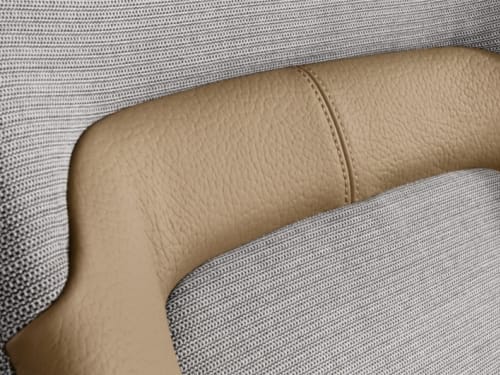
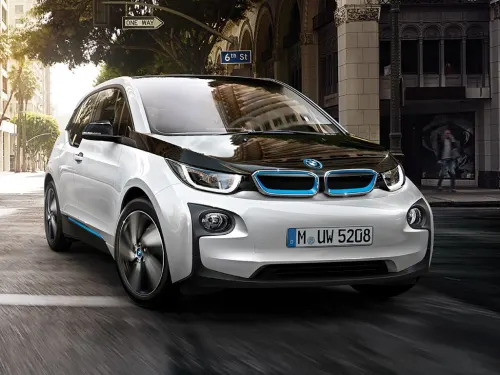
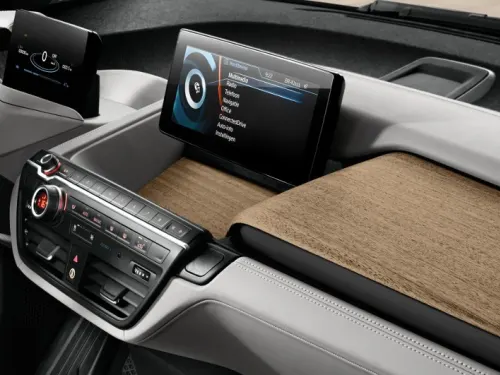
Working closely with the Forest Stewardship Council (FSC), who are committed to responsible and sustainable forestry by adhering to the strict standards, BMW only uses FSC-certified wood when sourcing materials for our vehicles. An example of this is the wood surrounding the instrument panel inside the BMW i3, which is made from FCS-certified eucalyptus wood.
The interior of the i3 is made up of 30% Kenaf, one of the world’s most sustainable multipurpose fibre plants due to its ability to quickly regenerate, meaning it cannot be over-harvested. In replacing traditionally used petroleum-based plastics within the interiors, kenaf is up to 30% lighter and therefore reduces the weight of the BMW i3, so less energy is needed to move it. As for the textile materials, these are made up of an innovative yarn manufactured from granulates that are made of recycled PolyEthylene Terephthalate (PET) bottles.
Another car following in the BMW i3’s sustainable footsteps is the BMW iX. Besides being an all-electric car, some of the natural materials used within the interior have been conserved, making the BMW iX one of our most sustainable cars yet. 100% ECONYL®, a nylon yarn that is extracted from regenerated nylon waste, is used in the floor mats and the upper layer of floor coverings. The high-voltage battery in the vehicle contains up to 50% secondary nickel and up to 30% secondary aluminium, yet The BMW group aims to improve these figures even further for future product generations.
Carrying on the sustainability through to exteriors, The BMW Group became the first automotive manufacturer to use certified sustainable natural rubber for tyre production, using a wood-based material, rayon, that is used to strengthen tyres. As a founder of the Global Platform for Sustainable Natural Rubber (GPSNR), our intention is to structure the entire value-added chain of natural rubber so that it is evidently sustainable, as a large share of natural rubber grown worldwide goes into tyre production, and its high elasticity and sturdiness make it an irreplaceable resource. The GPSNR also implements measures to stop deforestation and make supply chains more transparent.
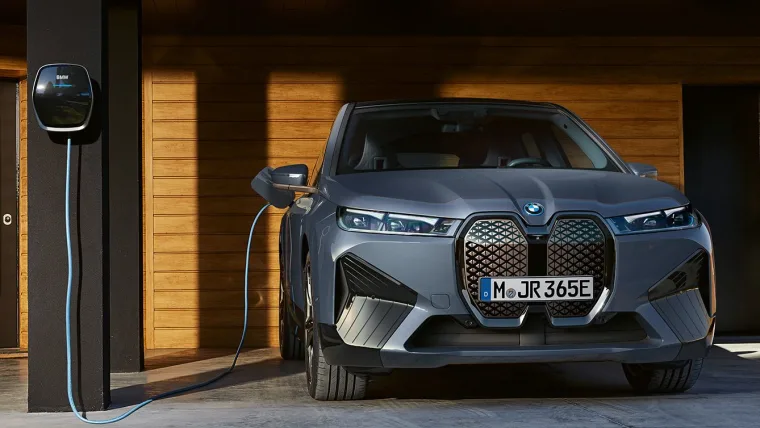
Charging
When making the switch to an all-electric vehicle, BMW understands that finding charging components can be a concern not only at home but in public as well. To battle the fear of losing power, often dubbed ‘range anxiety’, we have guaranteed that charging is effortless to fit around your lifestyle and that multiple ways to recharge have been developed throughout various destinations in the UK. Electric car drivers are assured that their vehicles can be charged wherever they have access to power, and can experience any journey without uncertainty.
Ensuring that your BMW EV battery is protected and maintains its longevity, BMW car charging ports automatically stop generating power to the car when the battery is fully charged, as overcharging can ultimately decrease its lifespan. Automatic termination once fully charged guarantees that the car’s battery health is kept to a high capacity with the small chance of needing it replaced, therefore making it more sustainable.
The opportunity to stay connected with charging is sure to diminish range anxiety, as the My BMW App* allows you to plan your journey before setting off. The app will calculate the distance of your journey and display it to your car, where you can see how much range is left to take you to your destination. If the destination lies outside the electric range in your car, the App will automatically add a charging stop to your route.
Charging FAQs
Your electric or plug-in hybrid car can be charged wherever you have access to power – whether at home or at the workplace, from a conventional socket or with the bp pulse wallbox for faster charging. When you are travelling, with BMW Charging you’ll have simple access to an expanding superregional network of public AC Fast charging stations from providers such as bp pulse, or high-power DC Rapid charging stations, such as those from IONITY.
There is no set cost for charging an electric car, as the average cost can vary depending on the local electricity tariff and/or the provider of the charging station. The Test Your Drive tool allows you to explore whether driving an Electric or Plug-in Hybrid BMW can save you money on fuel costs. The tool provides a comparison of average fuel costs with home charging costs based on your average journey profile.
Charging times for electric cars can vary depending on the cable or charging station used. The fastest way to charge your electric vehicle is by using direct current (DC), whilst alternating current (AC) takes longer. The new BMW i3, for example, is charged from 0-80% after approx. 40 minutes when charged with 50 kW at a Rapid charging (DC) station. These are commonly found at motorway service stations. Alternatively, using a BP Pulse wallbox, the charging time is between 3 – 5 hours.
Your BMW electric or plug-in hybrid car can be charged with alternating current (AC), at any* publically available charging station with a Type 2 connector. BMW pure electric models can additionally be charged with direct current (DC), at any* publically available charging station with a Combined Charging System (CCS) connector.
BMW Charging, gives access to a growing network of public charging stations, including high-power-charging stations from a wide range of partner providers. The AC Fast charging cable for public charging is already included with the standard equipment.
*Specific network membership, Apps or RFID cards may be required.
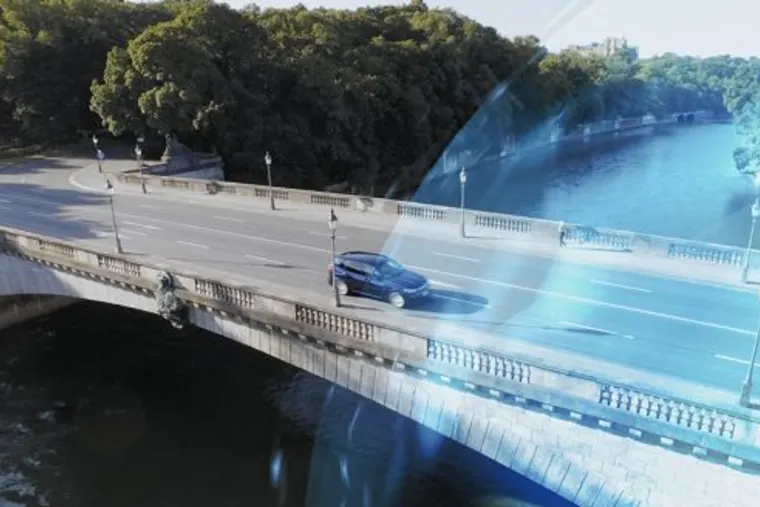
Drive
All BMW i models and plug-in hybrids come equipped with an eDrive technology which comprises an electric motor, high-voltage lithium-ion battery and an intelligent energy management system. In the UK, BMW is gradually implementing eDrive Zones, which will automatically switch a plug-in hybrid vehicle to its electric drive mode whenever it enters a designated green zone. The BMW eDrive Zones are powered by geofencing technology, a location-based virtual boundary, which is activated via GPS to ensure that zero-emissions are released and that air pollution is kept to a minimum in urban areas. Not only is the switch to electric drive mode environmentally friendly, but also works out to be cost-effective for the driver, as energy costs are significantly lower during a purely electric trip than those using a combustion engine. As of August 2020, the My BMW App* allows plug-in hybrid customers to earn BMW points when they drive purely electric, gaining 1 point for every kilometre travelled electrically. Whilst travelling in BMW eDrive Zones, drivers are rewarded with twice the amount of points, and with a corresponding score can redeem these points for charging credit. This acts as an incentive and encourages drivers to make the switch to fully electric driving with the aim of reducing pollutant qualities.
BMW strives to be a fully sustainable company by focusing first and foremost on conserving resources and aiming towards a circular economy.
* Please note that not all My BMW app features are available on all BMW vehicles and that app features are dependent on model and specification.
Interested?
Enquire below to speak to one of our BMW i experts.

